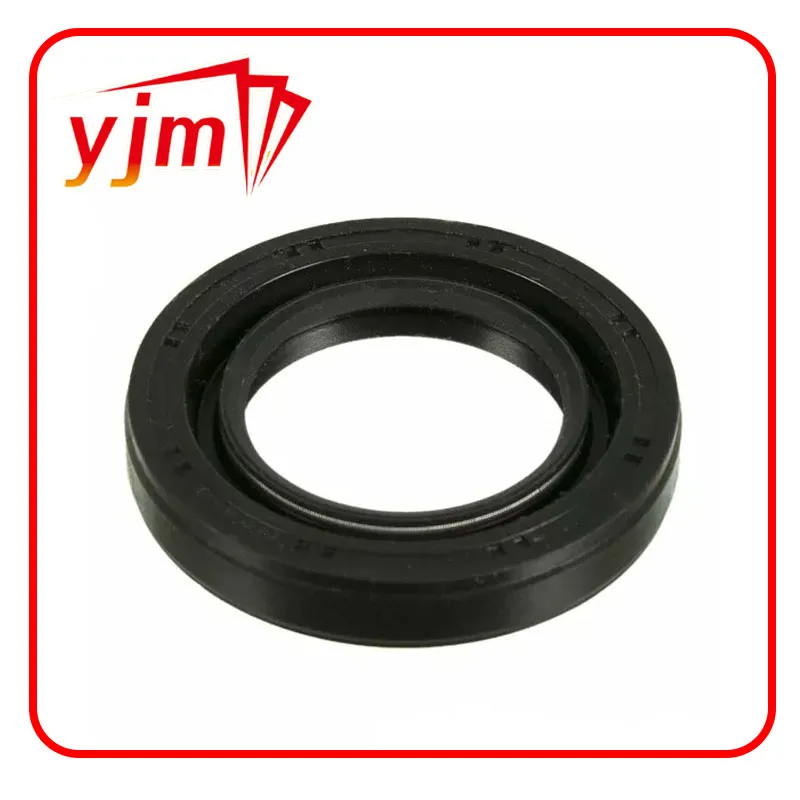rear end oil seal
The Importance of Rear End Oil Seals in Automotive Engineering
In the world of automotive engineering, every component plays a crucial role in the overall performance and longevity of a vehicle. One often overlooked yet vital component is the rear end oil seal. Understanding its function, importance, and maintenance can significantly contribute to the efficiency and durability of a vehicle’s drivetrain.
What is a Rear End Oil Seal?
A rear end oil seal is specifically designed to prevent the escape of lubricant from the rear axle assembly. It is typically located on the differential or the axle housing, where it forms a barrier against dirt, debris, and moisture. This seal prevents oil leaks that can lead to catastrophic failures in the drivetrain, ultimately protecting the vehicle's efficiency and integrity.
Functions of Rear End Oil Seals
1. Leak Prevention The primary function of the rear end oil seal is to prevent lubricant from leaking out of the differential housing. Oil plays a vital role in the lubrication of gears, reducing friction, and preventing wear and tear. A proper seal ensures the lubricant remains contained, allowing for optimal performance.
2. Contaminant Protection In addition to retaining oil, these seals also protect the internal components from external contaminants, such as water and dirt. This protection is essential, particularly in off-road vehicles or those operating in harsh environmental conditions.
3. Pressure Management Rear end oil seals help maintain the necessary pressure within the differential. Variations in temperature can cause oil to expand or contract; a properly functioning seal accommodates these changes while keeping the oil where it belongs.
Importance of Rear End Oil Seals
The significance of rear end oil seals cannot be overstated. Failing to maintain or replace a worn or damaged oil seal can lead to several problems
rear end oil seal

- Lubrication Failure A leak can lead to insufficient lubrication of the differential gears, causing overheating and increased wear. This can escalate into a substantial mechanical failure, leading to costly repairs.
- Contaminated Lubricant When dirt and debris enter through a compromised seal, they can contaminate the lubricant, leading to abrasive wear on internal components.
- Environmental Impact Oil leaks not only affect the vehicle but can also have environmental repercussions. Oil spills can contaminate soil and waterways, contributing to ecological damage.
- Cost Implications Regularly replacing oil seals and maintaining them can be far less expensive than repairing or replacing an entire differential system due to failure.
Maintenance and Replacement
Routine inspection of rear end oil seals should be part of regular vehicle maintenance. Signs that the seals may need replacing include visible oil leaks on the differential housing, unusual noises coming from the drivetrain, or increased resistance when turning the vehicle.
Replacing a rear end oil seal is typically a straightforward process, but it should be approached with caution. Mechanics often recommend checking for other possible issues simultaneously, such as checking the condition of the differential fluid and the gears themselves.
When replacing seals, it’s crucial to use high-quality parts that are designed to meet or exceed OEM specifications. This ensures the best fit and longevity. Additionally, ensuring that the sealing surfaces are clean and free of debris before installation can significantly reduce the chance of future leaks.
Conclusion
In summary, rear end oil seals may be a small component, but their importance in the overall function of a vehicle cannot be overlooked. Regular maintenance, timely replacement, and a keen awareness of their condition can help prevent severe mechanical failures and enhance a vehicle's reliability. Understanding the role of these seals fosters a greater appreciation for the intricate systems at work in modern automobiles and emphasizes the significance of proactive vehicle care. By taking these steps, drivers can ensure their vehicles remain safe, efficient, and environmentally friendly.
-
Understanding the Front Main Engine Seal: Purpose, Maintenance, and Installation
News Jul.29,2025
-
Understanding O-Rings and Seal Rings: Types, Applications, and Custom Solutions
News Jul.29,2025
-
Understanding Crankshaft Oil Seals: Rear Seals, Pulley Seals, and Their Role in Engine Integrity
News Jul.29,2025
-
The Importance of Front and Rear Crankshaft Seals in Engine Performance and Oil Management
News Jul.29,2025
-
Crank Oil Seals: Functions, Types, and Cost Considerations in Engine Maintenance
News Jul.29,2025
-
A Comprehensive Guide to O-Rings and Seals: Types, Materials, and Global Applications
News Jul.29,2025
-
Mastering Diesel and Performance Engine Maintenance: A Guide to Critical Oil Gaskets
News Jul.28,2025
Products categories















